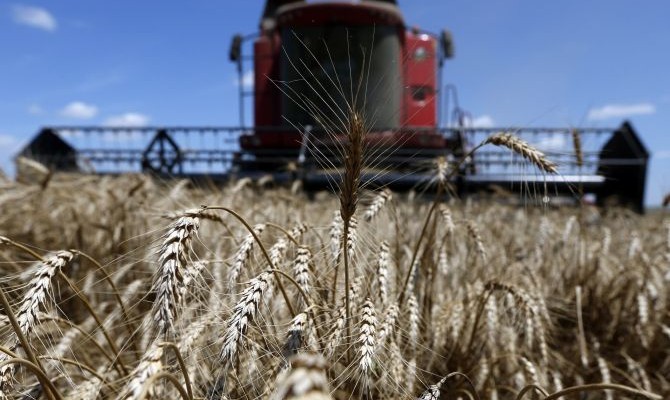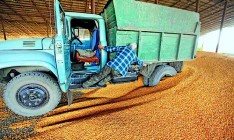Business
ResultsDespite the record-high harvest this year, the profits of agrarians leave much to be desired

The results of agrarians exceeded even the boldest expectations. According to the results of 2014, the grain harvest in Ukraine set a new historic record — 63.7 mn t of grain have already been harvested and by the end of the harvesting campaign this figure could reach 64 mn t. This is without factoring in the annexed Crimea, which earlier contributed nearly 1 mn t to the grain harvest bank, and in the occupied eastern regions of the country analysts of the Ministry of Agrarian Policy and Food calculated losses of 1.5 mn t of grain. As a reminder, in 2013 agrarians gathered 63.05 mn t of grain on the entire territory of Ukraine.
Agrarians managed to achieve this year’s record indicators thanks to an increase in the productivity of land in practically all categories of agricultural crops. For example, the productivity of grain and legumes increased this season by 10% to 43.6 centners (centner is a unit of 100 kg) per hectare. The highest level of productivity was registered in the Khmelnytskiy oblast — 64.1 cwt/ha, Vinnytsia oblast — 61.4 cwt/ha and the Sumy oblast — 60 cwt/ha. Expert of the Ukrainian Club of Agrarian Business Ihor Ostapchuk said the good weather conditions contributed to the banner harvest.
Enough food to go around
Around 27.5 mn t of grain is needed to satisfy domestic demand in Ukraine, says expert of the Agro-industrial Division of the state enterprise Derzhzovnishprom Olha Yakubina. «Of this amount, foodstuff consumption amounts to approximately 24%, the need for animal husbandry is 60% and another 11% forms the seed stock and 5% will go for non-food needs,» the expert specified.
With the increase in the harvest there are all premises for a growth in export. Yakubina suggests that export of grain based on the results of this year’s harvest will be approximately 35 mn t, which is nearly 10% higher than in 2013. However, she states that in order for export to be uninterrupted the issue of use of state-of-the-art technologies and equipment that would allow for reducing logistics expenses in this process and increasing the volumes of output and transshipment, as well as shipments abroad, must be resolved.
Saudi Arabia, Egypt, Spain, Iran and Turkey are the largest consumers of Ukrainian grain. Today, the markets in the Middle East are considered to be the most lucrative for Ukrainian grain producers. As a reminder, in early December UkrLandFarming controlled by Oleh Bakhmatyuk already consigned its first party of Ukrainian corn to China. Up until then this market was open only to the State Food and Grain Corporation, which executed shipments within the framework of a credit agreement to the tune of US $3 bn signed by then Agrarian Minister Mykola Prysyazhnyuk in 2011.
Ukraine will have bread
Devaluation of the hryvnia also affected agrarians. According to calculations of the Ministry of Agrarian Policy, the average cost of conducting spring sowing works in 2014 per one hectare of agricultural land was UAH 2,090 (taking into account Crimean plots of land), which is 11% more compared to 2013.
Many agricultural producers reduced their expenses on fertilizers, which resulted in a lower quality of grain. This together with weather factors was one of the reasons for the relatively low harvest of food grain. Yakubina said that due to the high demand on the world market exporters are very actively exporting food grain. «However, a shortage of this commodity on the domestic market has so far not been observed,» the expert assured.
According to the estimates of Ostapchuk, the share of food grain is up to 30-35% (7.5-9.0 mn t), while domestic consumption is not more than 7 mn t. «At the moment the issue is that the necessary reserves must remain inside the country and not go for export,» Yakubina concluded.
The agrarians also managed to turn a profit thanks to devaluation. Exporters bought grain on the domestic market for hryvnia and sold it for dollars, which brought them additional profits. Experts cannot estimate the sum of earnings of agricultural producers as every contract is signed on individual terms. However, based on the export volumes one can boldly speak about tens of millions of dollars of additional income.
Price obscurity
Price remains the most important issue for agrarians today. In particular, both farmers and traders hope that the world prices of grain will rise. However, the international climate operates, pardon the pun, «against the grain» of the desires of agrarians. «Inclement weather conditions in Ukraine, Russia, Argentina and Brazil today are maintaining the prices on world markets. However, record-high world output is also sending out a signal and levels off the events in those countries on the global scale,» says Yakubina.
The prices of grain could grow due to the seasonal factor. «Trends are such that closer to the spring the reserves of grain will decrease and its prices will rise. For this reason, it is totally possible that in February-March of next year we will witness a 10% rise in prices,» says analyst of the grain market at the APK-Inform consulting company Andriy Kupchenko.
The further profitability of agrarian production will depend on the behavior of the hryvnia. If devaluation continues, resources will become even more expensive and this will fully level off the export earnings of agrarians as fuel, fertilizers and equipment are used not only to increase grain export, but also for domestic consumption. If devaluation takes a downturn, agrarians may decline from maximum export shipments as it will be more profitable for them to process grain to create added value and then ship the processed commodity abroad.






 of the agreement of syndication with Financial Times Limited are strictly prohibited. Use of materials which refers to France-Presse, Reuters, Interfax-Ukraine, Ukrainian News, UNIAN agencies is strictly prohibited. Materials marked
of the agreement of syndication with Financial Times Limited are strictly prohibited. Use of materials which refers to France-Presse, Reuters, Interfax-Ukraine, Ukrainian News, UNIAN agencies is strictly prohibited. Materials marked  are published as advertisements.
are published as advertisements.